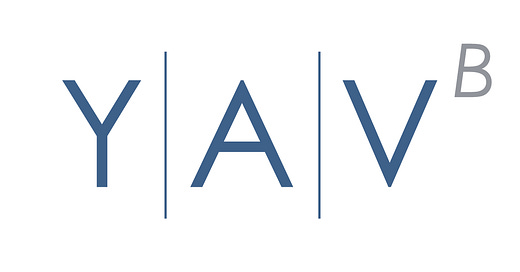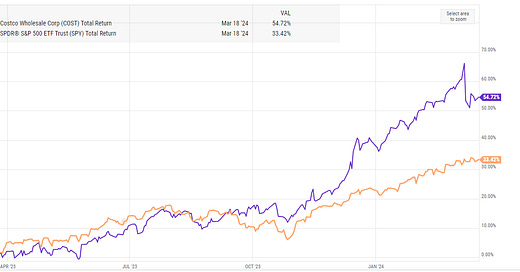
Just wanted to do a follow up on a few odds and ends from my “banks banks banks (redux)” post earlier this week.
At the the end of my post, I said “I think a basket of banks will likely do very well over the next few years.” I just wanted to emphasize the term “basket” there; there are just too many idiosyncratic issues that can happen at a bank (I tweeted two from FHN / RF that are hilariously over the top for how dumb they are). I kind of look at buying good / overcapitalized banks around book value as a positive EV bet, but one with huge left tails. Banks are in the business of making loans; they generally don’t have positive surprises that take their book value unexpectedly up 20%…… but they do have one off negative surprises that could do the reverse and cut book value substantially. So I think you want to play banks in some type of basket versus a “focus on your favorite idea” play so that you get the benefit of the positive EV where a bunch of winners can make up for one or two idiosyncratic losers. I obviously could be wrong, and the size of the basket is up for debate, but that’s just my view!
(This is probably the least important one / only relevant to some banks of specific sizing): One thing to remember with banks is that there are certain asset levels where their regulatory burden increases. One of those levels is $100B of assets, and a bunch of the regionals have line of sight to bumping up to that level. Those banks are aware of it, and in general they have no desire to trip that threshold through slow asset growth (the rule of thumb is you want to slingshot through these thresholds with M&A to leverage the extra cost burden. So instead of growing assets 10% in a year to go from $95B to $105B and triggering that threshold, you do a merger of equal with two ~$95B banks and get to ~$200b in one shot). So, eventually, we probably see a wave of regional bank M&A…. but until then I suspect most regional banks will be aggressive in returning capital to stay below that regulatory burden. So, in the near to medium term, I’d guess you get a nice return of capital at these banks, and in the medium term probably a round of M&A that could serve as a catalyst for exiting. Here’s FHN on their Q3 earnings call talking about not accidentally going over asset thresholds:
No real short-term limits. I think we've got a few years of runway. And if necessary, we can tread water. So we understand where that bright line is, and we're going to be very intentional about not inadvertently stumbling over that threshold. So until we get greater clarity about what that regulatory landscape looks like, we will do all we can to grow the balance sheet and at the same time, not inadvertently stumble over.
But we think we've got a few years. It's not an immediate concern in the near term.
Third point: I think it’s easy to look at the environment (will we hit a recession? will charge offs go up? etc.) and be scared…. but it’s also easy to forget that the best investments are generally going to be made during rocky environments. That rule applies to both buying stocks (it’s better to buy when people are scared) and making loans (it’s better to make a loan when all your competitors are pulling back!). If you’re buying an overcapitalized bank with good assets right now, this should be a great environment for them to make loans, and that’s going to have a hugely positive impact on earnings / asset values in the future. Here’s FHN talking about their appetite for loan growth and how they’re underwriting with wider spreads / better covenants on their Q3 earnings call:
we do see some opportunities where other banks have pulled out completely. So we've got some opportunities in mortgage warehouse lending. We've got some opportunities in what I would just call for commercial in our markets. We can talk about generational opportunities to bring over family of companies in the markets that we continue to serve. There's also some opportunities in asset-based lending.
One of the reasons that we think this could be attractive too is we are seeing some ability to have widening spreads and even more conservative underwriting. So things like more upfront equity, better covenants, more opportunities to have [indiscernible], resource, that kind of thing.
Point #4 somewhat builds off point 3. The competitive world in banking has changed a lot over the past year. SIVB and FRC went bankrupt, the hot fintech players have seen their funding environment change dramatically, there are tons of banks whose balance sheet is stuffed with HTM securities with huge unrealized losses that they’ll need to hold for years to accrue the losses back. For well capitalized banks without any of those issues, I suspect there’s a lot of profits to be had by investing in today’s environment. There’ll be less competition for loans (a la point #3), but also just less competition for relationships. Remember, SIVB and FRC built their franchises on taking huge share of super prime customers; with the benefit of hindsight, we know they did that in part by taking on outsized risk in some way, shape, or form. If you were a bank prudently managing risk for the past five years, there’s no way you could compete….. but now the opportunity to pick up some of those customers is here! I’d suspect banks with good balance sheets and franchises today are going to realize excellent returns on the investments they’re making right now (whether that’s literal investments in the form of loans or intangible investments into new customer relationships).
I mentioned in the original post that you needed to dig into the balance sheets to differentiate between banks because I feel like the market is painting banks as a whole with a broad brush and not differentiating; I liked how PNC put it at a conference earlier this year
The people who'll ultimately win from this, there's not as much differentiation as share prices as there ought to be today.
WAL is not my favorite bank for a variety of reasons (it’s fine, but something about this NYT article and being at/near the epicenter of the storm just makes me want to stay away), but their Q3 earnings call is worth reviewing if you’re interested in banks as it hits a lot of the points I’ve covered, and I thought this exchange was kind of interesting in framing the bull case.
Anyway, just wanted to put those quick follow up points up, because they address a lot of the questions / inbounds I’ve been getting.
There’s a lot of fear out there….. but I continue to believe if you find a handful of good banks trading around book and are willing to buy them with a longer term view, you’ll make excellent multi-year risk adjusted returns.













excellent work